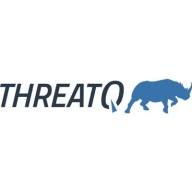

ThreatQ and Microsoft Defender Threat Intelligence are both leading threat intelligence platforms in the market. Microsoft Defender has the upper hand due to its comprehensive threat detection and response capabilities, as well as its added security features.
What features are offered by ThreatQ in comparison to Microsoft Defender Threat Intelligence?ThreatQ offers customizable threat intelligence management, allowing users to tailor feeds and automate responses. It also provides advanced threat intelligence management and ease of integration. On the other hand, Microsoft Defender offers thorough threat detection, integrated response capabilities, and extensive security features, making it richer in features.
What areas of improvement can be found in ThreatQ in comparison to Microsoft Defender Threat Intelligence?Users of ThreatQ suggest improvements in data visualization, reporting functionalities, and overall user interface. For Microsoft Defender, areas for improvement include enhanced user documentation, more straightforward configuration processes, and better in-product guidance.
How is the ease of deployment and customer service of ThreatQ in comparison to Microsoft Defender Threat Intelligence?ThreatQ has straightforward deployment, but some users report occasional issues needing support. Microsoft Defender’s deployment is praised for its seamless integration with other Microsoft products. Microsoft’s customer service is robust and timely, giving it an advantage due to its seamless product ecosystem integration.
What setup costs and ROI can be seen with ThreatQ in comparison to Microsoft Defender Threat Intelligence?ThreatQ is noted for reasonable setup costs and delivering reliable ROI for medium to large enterprises. Microsoft Defender, though sometimes pricier, offers superior value with its extensive features and long-term ROI, justifying the investment despite its higher cost.

Microsoft Defender Threat Intelligence is a comprehensive security solution that provides organizations with real-time insights into the latest cyber threats. Leveraging advanced machine learning and artificial intelligence capabilities, it offers proactive threat detection and response, enabling businesses to stay one step ahead of attackers. With Microsoft Defender Threat Intelligence, organizations gain access to a vast array of threat intelligence data, including indicators of compromise (IOCs), security incidents, and emerging threats. This data is collected from a wide range of sources, such as Microsoft's global sensor network, industry partners, and security researchers, ensuring comprehensive coverage and accuracy. The solution's advanced analytics and machine learning algorithms analyze this threat intelligence data in real-time, identifying patterns, trends, and anomalies that may indicate a potential security breach. By continuously monitoring the network and endpoints, Microsoft Defender Threat Intelligence can quickly detect and respond to threats, minimizing the impact of attacks and reducing the time to remediation.
ThreatQ is a versatile threat intelligence platform designed for effective aggregation, analysis, and management of threat data. It streamlines threat information from multiple sources to enhance understanding and response capabilities.
ThreatQ supports incident response by correlating indicators of compromise and centralizing threat data in a single repository. This platform improves decision-making with its comprehensive threat landscape view and collaborative features. Its detailed analytics, customizable workflows, and scalability offer robust support for security teams. ThreatQ's integration with existing tools and powerful automation capabilities streamline threat detection and response processes. While some users point out the need for better integration and data visualization, ThreatQ remains a preferred choice for many due to its threat prioritization and reporting features.
What are the key features of ThreatQ?ThreatQ is implemented across various industries, providing valuable threat intelligence management in sectors like finance, healthcare, and government. These industries benefit from its incident response support, detailed analytics, and ability to centralize and prioritize significant threats, improving overall security posture.
We monitor all Threat Intelligence Platforms reviews to prevent fraudulent reviews and keep review quality high. We do not post reviews by company employees or direct competitors. We validate each review for authenticity via cross-reference with LinkedIn, and personal follow-up with the reviewer when necessary.